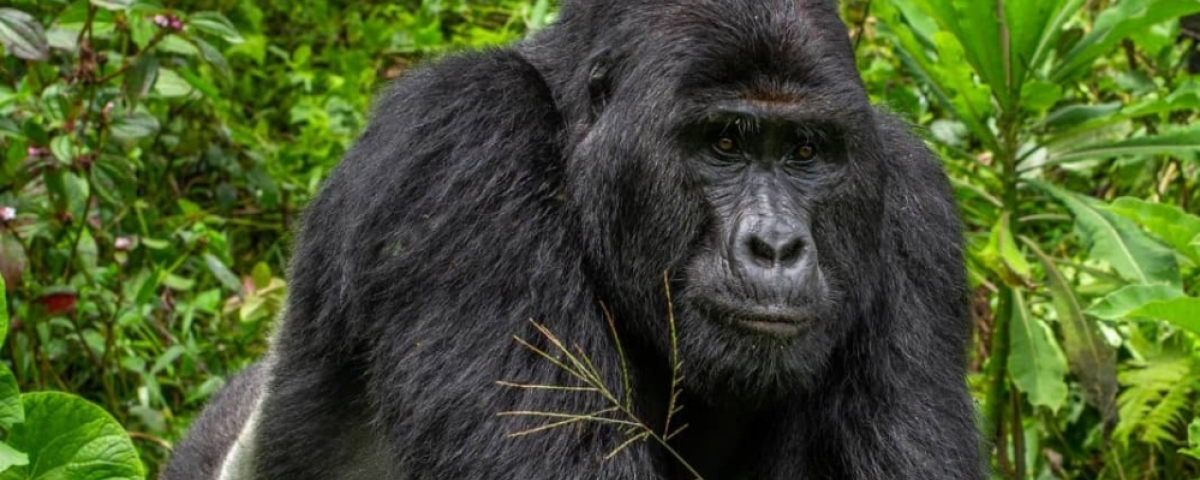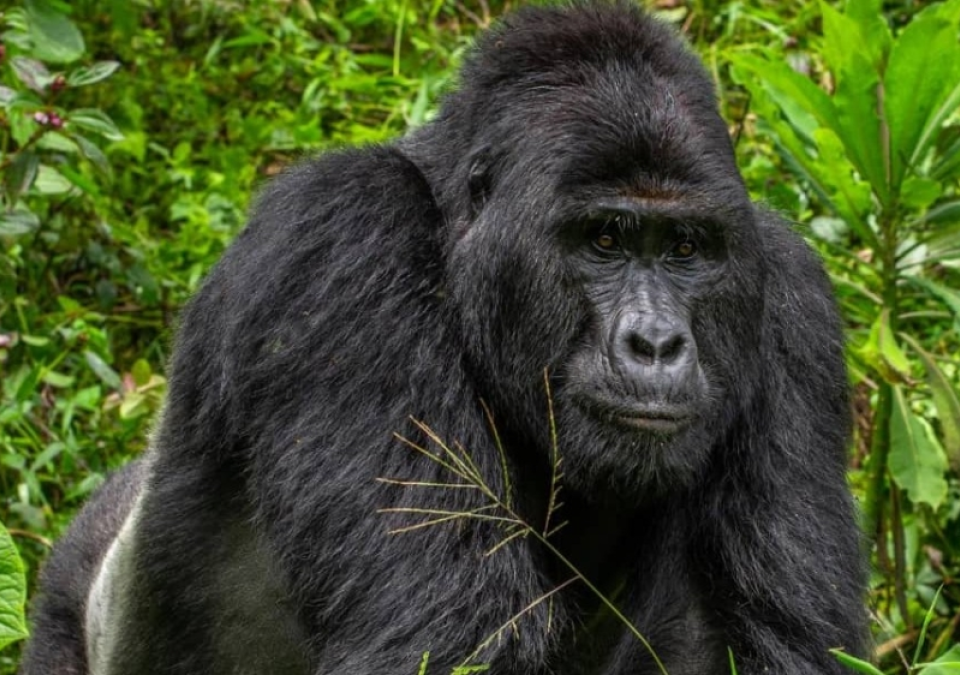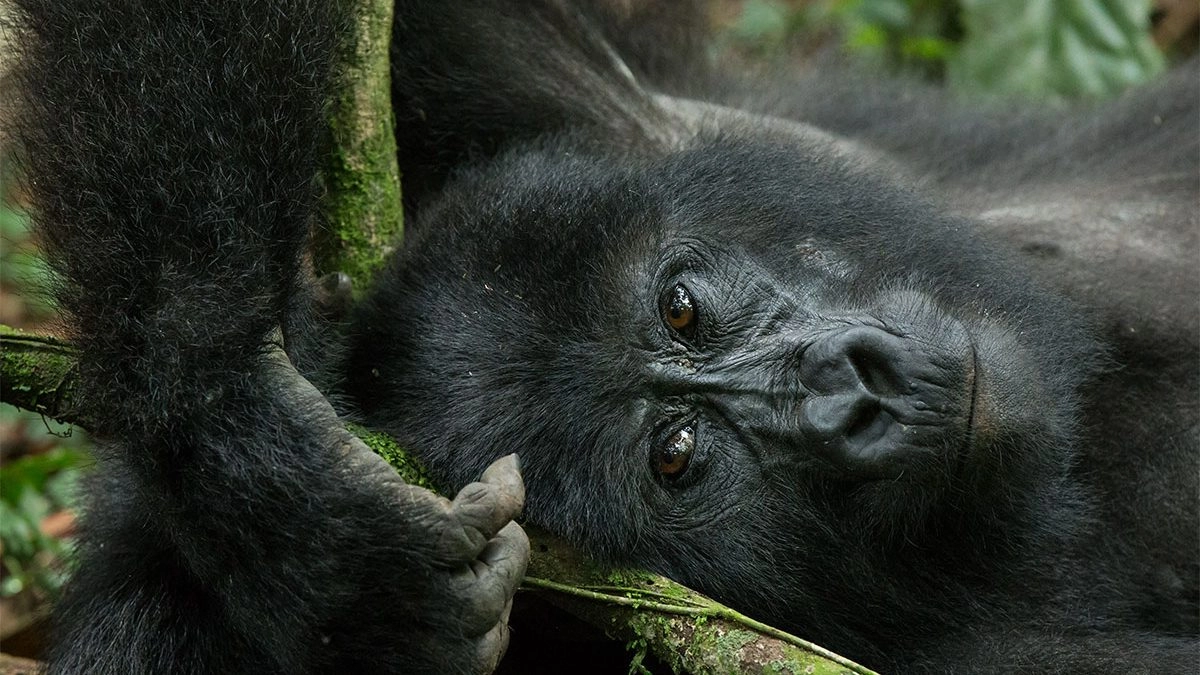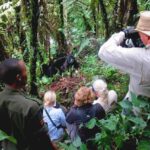
Photography Tips for Gorilla Trekking in Bwindi
August 22, 2025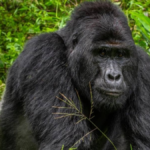
Mountain Gorilla Photography Tips for Beginners
August 22, 2025Mountain Gorilla Photography Tips – Ultimate Guide for Uganda Gorilla Photo Safari
A Uganda Gorilla Photo Safari is one of the most exclusive and rewarding wildlife photography experiences in Africa. Mountain gorillas, with their expressive eyes and complex social behaviors, offer photographers unparalleled opportunities to create emotionally compelling images. However, photographing these gentle giants requires more than just having a camera—it demands careful planning, understanding of forest environments, proper gear selection, and knowledge of wildlife behavior.
Ovacado Adventures designs Gorilla Trekking Photo Safaris that blend photography mastery with immersive wildlife encounters. Travelers engage in guided treks through Bwindi Impenetrable Forest or Mgahinga Gorilla National Park, spending up to one hour with a habituated gorilla family, or up to four hours with the Gorilla Habituation Experience. These safaris provide opportunities to capture gorilla interactions, forest landscapes, and cultural experiences around the lodge. With appropriate preparation, every shutter click can produce award-worthy images, transforming a safari into a professional Gorilla Photography Tour.
This guide outlines mountain gorilla photography tips, equipment recommendations, camera settings, composition techniques, and environmental considerations to help you maximize your Uganda Gorilla Trekking Photo Safari experience.
Essential Equipment for Gorilla Photography Tours
Lenses and Focal Length
The most important tool for Gorilla Photography Safaris is your lens. Fast lenses with wide maximum apertures (f/2.8 to f/5.6) allow for exceptional low-light performance, crucial in the dense rainforest. Telephoto zoom lenses, such as 70–200mm or 100–400mm, provide flexibility to capture intimate gorilla portraits without approaching too closely, respecting wildlife safety regulations.
Photographers benefit from combining lenses: wide-angle lenses for contextual shots of gorilla families in their habitat, and telephoto lenses to capture detailed expressions, textures, and behaviors. Lightweight yet durable lenses are ideal, as treks involve navigating rugged trails, streams, and steep inclines. Ovacado Adventures encourages packing only essential gear to maintain agility during forest hikes, while still achieving professional-quality results.
Camera Settings for Low Light
Mountain gorilla habitats are dim due to thick forest canopies. Adjust ISO settings between 800–3200 depending on available light, balancing exposure with minimal noise. Wide apertures allow more light to enter the lens and create shallow depth-of-field, isolating subjects against blurred forest backgrounds. A shutter speed of at least 1/250s or faster freezes motion, preventing blur as gorillas move, climb, or interact with each other.
Continuous autofocus modes (AF-C or AI Servo) ensure moving subjects remain in focus. Photographers should shoot in RAW format to maximize post-processing flexibility. Exposure compensation adjustments help counteract sudden light changes caused by dappled sunlight filtering through the canopy. These settings are essential for anyone aiming for a professional Africa Gorilla Photo Safari portfolio.
Accessory Essentials
Proper preparation includes extra memory cards, multiple fully charged batteries, and protective equipment for cameras and lenses. Lightweight monopods stabilize shots without hindering movement through dense vegetation. Rain covers and lens cleaning cloths protect gear from mist, rain, and humidity. Compact backpacks designed for photography allow easy access to multiple lenses and accessories while trekking.
Composition Techniques for Gorilla Photographic Tours
Focus on the Eyes
The eyes of mountain gorillas convey intelligence, curiosity, and emotion. Capturing the gaze creates powerful, intimate images that resonate with viewers. Photographers should focus on the gorillas’ eyes, even when framing group shots or environmental portraits, ensuring that emotional connection is preserved.
Embrace the Environment
Incorporating natural elements such as vines, leaves, or forest branches provides context and depth. These environmental frames enhance composition and tell the story of the gorilla’s habitat. Including foreground and background elements adds layers to your photographs, elevating them beyond simple wildlife snapshots.
Vary Your Shots
A comprehensive Gorilla Photography Safari should balance wide-angle and telephoto shots. Wide angles capture the dynamics of the group, the forest floor, and the surrounding canopy. Telephoto lenses isolate subjects for detailed portraits, highlighting unique behaviors such as grooming, playful interactions, or mother-infant bonds.
Creative Use of Light
Forest lighting changes constantly. Using natural light creatively, such as sunlight filtering through the canopy, enhances mood and texture. Adjusting exposure and aperture helps prevent overexposed highlights or underexposed shadows. Patience is critical, as the best lighting often occurs during early morning or late afternoon, enhancing the aesthetic of your Africa Gorilla Photo Safari portfolio.
Patience and Observation
Spending time observing gorilla behavior allows photographers to anticipate moments of interaction. Gestures, vocalizations, and social behaviors provide opportunities for storytelling through imagery. Patience and attentiveness differentiate professional Gorilla Photography Tours from casual snapshots.
Environmental Considerations for Gorilla Photography Safaris
Forest Conditions
Bwindi and Mgahinga feature dense rainforest with thick undergrowth and uneven trails. The forest canopy reduces natural light, making fast lenses and higher ISO settings necessary. Trail conditions can vary with recent rainfall, so hikers must prepare with waterproof gear and non-slip footwear.
Rainy Season Advantages
The wet season produces lush greenery, vibrant foliage, and flowing streams. While rain may complicate photography, it offers dramatic backdrops and unique wildlife behaviors. Protective gear for cameras and lenses is critical during these months, ensuring no opportunity is missed due to environmental factors.
Dry Season Benefits
Dry months provide easier trekking, clearer skies, and more predictable lighting. Reduced moisture in the air improves lens clarity, while firmer trails allow for smoother movement. However, foliage may appear less vibrant, so photographers may need to creatively use forest composition to maintain visual interest in their images.
Cultural Photography Around Safari Lodges
A complete Uganda Gorilla Photo Safari experience extends beyond wildlife. Lodges operated by Ovacado Adventures often offer immersive cultural activities. Batwa communities, one of Africa’s oldest indigenous groups, provide music, dance, and storytelling experiences. Photographers capturing these moments must respect privacy and request permission, creating images that celebrate both humanity and heritage.
Local village walks and community markets also present colorful photographic opportunities. Handmade crafts, vibrant textiles, and traditional tools allow creative foregrounds and contextual storytelling. By blending wildlife, environment, and cultural imagery, photographers can produce compelling Africa Gorilla Photography Safaris that tell a holistic story of Uganda’s natural and cultural landscapes.
Practical Tips for a Successful Gorilla Photography Tour
- Use a lightweight tripod or monopod to stabilize shots without limiting mobility.
- Carry backup batteries and memory cards due to the absence of charging stations in the forest.
- Select the right clothing—neutral tones reduce visual disturbance while trekking.
- Maintain respectful distance from gorillas to ensure safety and ethical photography.
- Plan for diverse shots, including portraits, group behavior, environmental context, and cultural encounters.
- Work with professional guides to anticipate animal behavior and lighting conditions.
These considerations make every Uganda Gorilla Trekking Photo Safari efficient, ethical, and rewarding.
Why Choose Ovacado Adventures for Gorilla Photography Safaris?
Ovacado Adventures specializes in tailored Gorilla Photography Tours. We combine intimate wildlife encounters with expert guidance on camera settings, composition, and ethical photography practices. Our experienced guides navigate forest trails, advise on lighting, and offer mentorship to photographers of all skill levels.
By booking a Uganda Gorilla Trekking Photo Safari with Ovacado Adventures, travelers gain access to exclusive gorilla habitats, cultural interactions, and professional photography insights. This combination ensures your safari produces not just photographs, but enduring stories of conservation, culture, and connection.
Our lodges are strategically located for convenience and immersive experiences, offering comfort, local cuisine, and cultural programming. Every Gorilla Photography Tour with Ovacado Adventures positions your brand or personal portfolio for recognition while supporting ethical wildlife tourism.
Transforming Gorilla Encounters into Timeless Photography
Mountain gorilla photography demands preparation, respect, and technical expertise. By combining high-quality equipment, proper camera settings, thoughtful composition, and patience, every Uganda Gorilla Photo Safari transforms into a professional and immersive experience.
Whether capturing the expressive eyes of a silverback, the playful antics of infants, or the lush forest environment, photographers create images that tell compelling stories of Africa’s wildlife and culture. Ovacado Adventures ensures these experiences are seamless, ethical, and enriching.
For photographers asking, “How can I capture professional gorilla images while respecting their habitat?”, the answer lies in combining technical mastery with ethical wildlife practices. With guidance from Ovacado Adventures, your Gorilla Trekking Photo Safari becomes a journey of discovery, conservation, and unforgettable photography.


